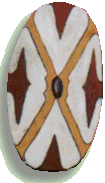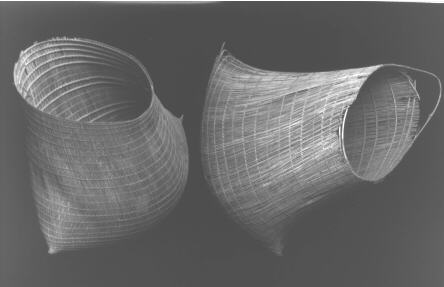Ngadjon Basket Making

Baskets ( Janjuu )
Meston (1904:6) noted that in the wet season 'The men sit in camp and make weapons or dilly bags..so beautifully made from the small lawyer palm..'

Photo - K. Mackay
Johnstone (1903: Dec 19) also mentioned these distinctive artefacts:
These baskets are made of split cane and are very prettily and symmetrically formed. They have large funnel-shaped ones 5 foot or 6 foot long, made of the same material, for the purpose of catching shrimps; these look like immense extinguishers.
For carrying they were slung over the forehead to hang down the back. ....and used to carry fruit and nuts back to camp and to carry fibre-rope nets and fibre-string fishing lines. It could also be used in the river for soaking plant foods that needed to have the poison leached out of them (i.e. ganyjuu )
Pedley (1992) p24
Making the Baskets
Lawyer canes, (Calamus spp.), climbing palms known as rattans in S.E. Asia, provide the raw materials for most of the basket making. Barrga , C alamus caryotoides , is the one used in making the body of most baskets and yapulam (Calamus australis) is usually used for the handle.
Many lengths of barrga must be gathered from the rainforest. It must be flexible. Both older and younger cane is needed and to retain pliability only so much can be gathered at a time. .. Each length of cane is put through a fire, held in the heat for a short time along its entire length, this is so that it will bend rather than break. The cane is split and the heart is taken out. ..When sufficient lengths of cane have been prepared, they are all laid out ready to begin weaving. The result , a horned basket shape (biconal), was made only in the Cairns to Cardwell region.
Pedley (1992) p33

